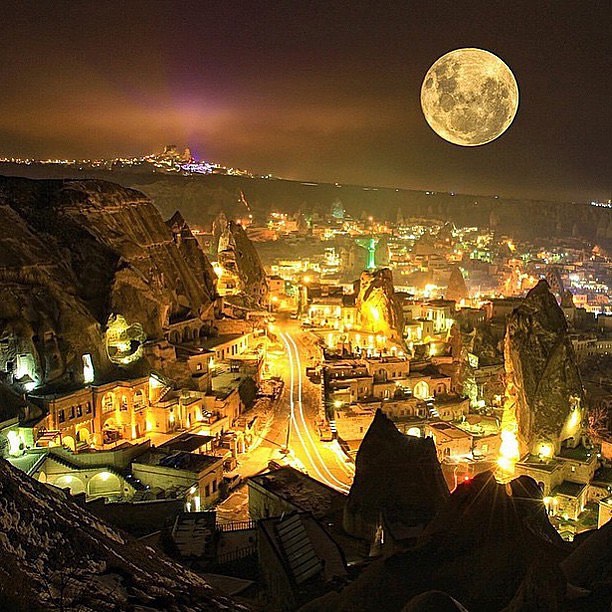Cappadocia - Happydocia Goreme, was called Maccan in antiquity and is one of the oldest sites in the Cappadocia region. The oldest known source where the name of this city is mentioned, is the book titled "The Doing of St. Hieron" of the 7th century. Macan was not a city naturally protected and hidden from the eye, therefore it suffered a lot from the Arab raides and lost the majority of its population. The churches of Maçan were rebuilt after the Arab invasion were over. It is generally accepted that the city was situated by the side of a river in its earliest times, and there are indeed two pillared mausoleums left from thes early stage as proof of this early settlement. There are five churches in the vilage of Goreme and its surroundings. The biggest of these is the Durmus Kadir Church which is thought to have been built in either the 6th or the 7th century. Its pillars and the preacher's desk are well preserved. The other churches of Göreme have been built in the 10th and the 11th centuries after the Arab raids. The youngest church here is the Yusuf Koc Church which was built in the 11th century when Goreme had an episcopate. Two of the churches of Göreme, the Bezirhani Church and the Orta Mahalli Church are withen the city, and the farthest church which can be reached in 30 minutes on
foot, is the Church of Karabulut dating back to the 11th century.
The most attractive settlement of the region is the vilage of Göreme which is an unsurpassed
example of the harmony of man and nature. People still live in the rock houses or use them as storerooms today, displaying an immense reverence for this volcanic earth and history. The village of Göreme does not only have rock houses, but also rock restaurants and rock hotels which all visitors find amazing. The natural boundaries of the city are drawn by the high rocks surrounding it and the fairy chimneys within; it's a place that offers unbelievable natural treasures.
Ancient volcanic eruptions blanketed this region with thick ash, which solidified into a soft rock—called tuff—tens of meters thick. Wind and water went to work on this plateau, leaving only its harder elements behind to form a fairy tale landscape of cones, pillars, pinnacles, mushrooms, and chimneys, which stretch as far as 130 feet (40 meters) into the sky.
But human hands performed equally incredible works here. The rocky wonderland is
honeycombed with a network of human-created caves; living quarters, places of worship, stables, and storehouses were all dug into the soft stone. In fact, tunnel complexes formed entire towns with as many as eight different stories hidden underground.
Göreme was inhabited as early as the Hittite era, circa 1800 to 1200 B.C. and later sat uncomfortably on the boundary between rival empires; first the Greeks and Persians and later the Byzantine Greeks and a host of rivals. This precarious political position meant that residents needed hiding places—and found them by tunneling into the rock itself.
The site became a religious refuge during the early days of Christianity. By the fourth century Christians fleeing Rome’s persecution had arrived in some numbers and established monastic communities here. The monks excavated extensive dwellings and monasteries and created Byzantine frescoed paintings in cave chapels beginning in the seventh century, which endure in well-preserved isolation to this day.
Göreme is rich with history, but not all of Cappadocia’s troglodyte dwellings are museums. Some still serve as homes and others as hotels, which offer a truly unique hospitality experience.
The primary threats to this World Heritage site come from the forces that created it in the first place. Erosion is returning some human endeavors to a more natural state, and extensive preservation efforts are meant to ensure that the wonders of Göreme survive for another millennium. With increased tourist trade, however, humans have brought modern development and damage or destruction to some of the ancient sites they once created.
How to Get There
The town of Göreme is the main visitor center for visitors to the park, though Nevsehir, Avanos, and Urgüp also have tourist facilities. These towns can be reached via bus from Kayseri airport. Long-distance buses also run from Istanbul and Ankara to the Cappadocia region.
When to Visit
Cappadocia is settled on a high, dry plateau in the middle of Turkey. The region is one of hot, dry summers and cold, sometimes snowy, winters.






